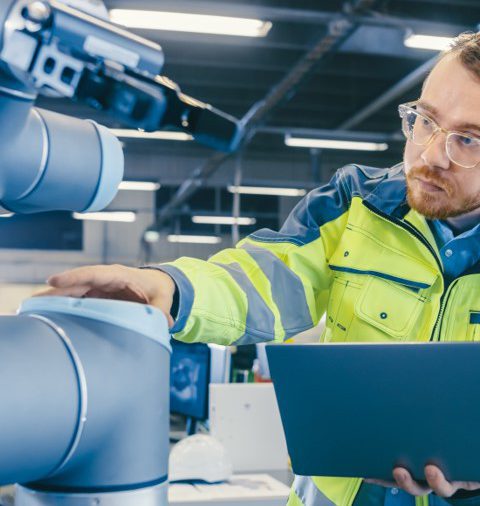User Experience Design
Definition of methods and tools for enhancing user satisfaction with a product by improving usability, accessibility, and pleasure provided in the interaction with the product. The research has its roots in human factors and ergonomics and focuses on the understating of the interaction between human users, machines, and the contextual environments to design systems that address the user experience. The research adopts human monitoring devices to objectify the experience lived by users (such as eye tracking, bio-sensors, and physiological parameters measuring tools) and defines specific protocol analysis to properly collect and interpret experimental data, according to a Human-in-the-Loop (HITL) approach. Motion capture technologies can also be used to track and digitalized the real users’ movements.

Projects
Related publications
Peruzzini, M., Pellicciari, M. (2017). A framework to design a human-centred adaptive manufacturing system for aging workers, Advanced Engineering Informatics, Vol. 33, pp. 330-349
Peruzzini, M., Grandi, F., Pellicciari, M. (2017). Benchmarking of tools for User eXperience analysis in Industry 4.0, Procedia Manufacturing, Vol. 11, pp. 806-813
Peruzzini, M., Pellicciari, M. (2018). User experience evaluation model for sustainable manufacturing, Int. J. Computer Integrated Manufacturing, Vol. 31 (6), pp. 494-512
Peruzzini, M., Grandi, F., Pellicciari, M. (2018). How to analyse the workers’ experience in integrated product-process design, Journal of Industrial Information Integration, Vol. 12, pp. 31-46
Peruzzini, M., Tonietti, M., Iani, C. (2019). Transdisciplinary Design Approach Based On Driver’s Workload Monitoring, Journal of Industrial Information Integration, Vol. 15, pp. 91-102
Prati, E., Peruzzini, M., Pellicciari, M., & Raffaeli, R. (2021), How to include User eXperience in the design of Human-Robot Interaction., Robotics and Computer-Integrated Manufacturing, 68, 102072.


